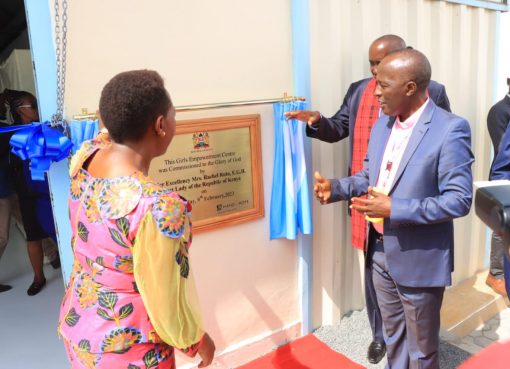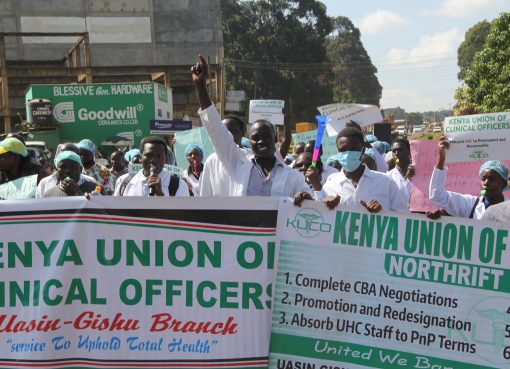Alia village at the deep west of Mwatate sub-county is a perfect description of a sleepy settlement. It is located at the heart of an expansive blend of bushes and grassland next to the mighty wildlife theater of Tsavo West. The only time Alia gets a shout-out in the local and national news is when elephants trod through the farms, leaving in their wake farm and property destruction.
However, the story of Alia has been one of a revolution, a good one for this matter, as it is now a county and national pacesetter on how the economy of fodder farming can breathe new life into a remote village and turn it into a life-sustaining activity.
This story of turning grass into gold goes back to 2010 when Anita Murunde and her fellow peasants would grow the typical crops of maize, cowpeas, beans, and green grams on a rain-fed basis.
As fate would have it, Elephants and other wild animals had perfect timing as they visited the local farms on the prime of their produce, leaving destruction and hopelessness among the farmers.
The tide of climate change did not help the already dire situation as scanty rainfall and unforgiving sun left the crops withering before reaching maturity. And so the only economic anchor of the Alia villagers disappeared into thin air and they were left with hungry stomachs and depending on food handouts from the national government and other non-governmental organizations.
All the while, Anita and the rest of the farmers used to weed grass from their farms and burn it in preparation for the perennially failing rains.
“For us, the grass had been a weed and we would burn or leave it on the sides of our farms to rot. We could not see it as anything else,” Anita said.
But that story changed when livestock farmers from other parts of Mwatate and the county trooped to Alia village in search of pasture. The weeded grass turned out to be a precious commodity after all. They began to sell it at throw-away prices and considered it good riddance from their farms.
Fast forward to 2019 when field officers from the Kenya Crops and Dairy Market Systems (KCDMS) visited the village and decided to pilot a native fodder project.
Anita and the other 24 trainers were taken through a one-month fodder production, harvesting, and preservation programme that opened their eyes to the entrepreneurship opportunities.
“After the KCDMS training, we could see an entrepreneurship opportunity that had been with us all the time. We were ready to take it on and train others,” Anita continued.
The villagers formed a group pegged around fodder farming and expanded their knowledge beyond their village.
For the last three years, Alia village has become a fodder hub for local livestock farmers, ranch owners, and farmers beyond the confines of the county.
Anita Murunde took the opportunity and ran away with it. Today, she employs over 15 laborers to harvest fodder from her and other rented farms. She had turned grass farming into an economic foothold.
“The training from KCDMS with funding from USAID has been life-changing. I took the opportunity and today I employ a dozen or so people in my grass business,” Anita confided.
The fodder farming wave has touched more than 300 individuals in Alia and beyond, becoming an income-generating activity for tens of households.
The KCDMS training facilitated through Mwailu covered production, harvesting, preservation, and instilling entrepreneurial skills among the trainees.
From grass being burned or rotting on the sides of farms, Anita today sells thousands of grass bales worthy of millions of shillings, and seasonally employs a dozen of villagers and wishes that many more people would take up the challenge and bring economic prosperity in other areas.
“I now sell thousands of bales, make good money, have invested in rentals, and I employ a good number of people during the harvesting seasons. I wish many more people would embrace this opportunity elsewhere,” said elated Anita.
With the rolling out of the Kenya Climate-Smart Agriculture Project (KCAP) by the national government with a focus on increasing agricultural productivity through climate-resilient farming practices among small-scale farmers, Taita Taveta has been identified as one of the counties with a massive potential for fodder production.
Smallholder farmers have now embraced the opportunity to grow native and exotic fodder with support from both tiers of government and with technical support from the Kenya Agriculture and Livestock Research Organization (KALRO) in partnership with donor-funded organizations.
The domestic market for fodder in Kenya is growing as more farmers turn to sustainable livestock farming in the face of changing climatic tides.
The fodder sector is now a new avenue for farmers even in remote and rain-deprived regions to explore and turn it into an income trap like the villagers in Mwatate.
The overall effect will be the creation of jobs and income streams from women and youths and enhance the purchasing power of locals as well as contribute, albeit in a small way, to the national economic growth.
By Arnold Linga Masila





